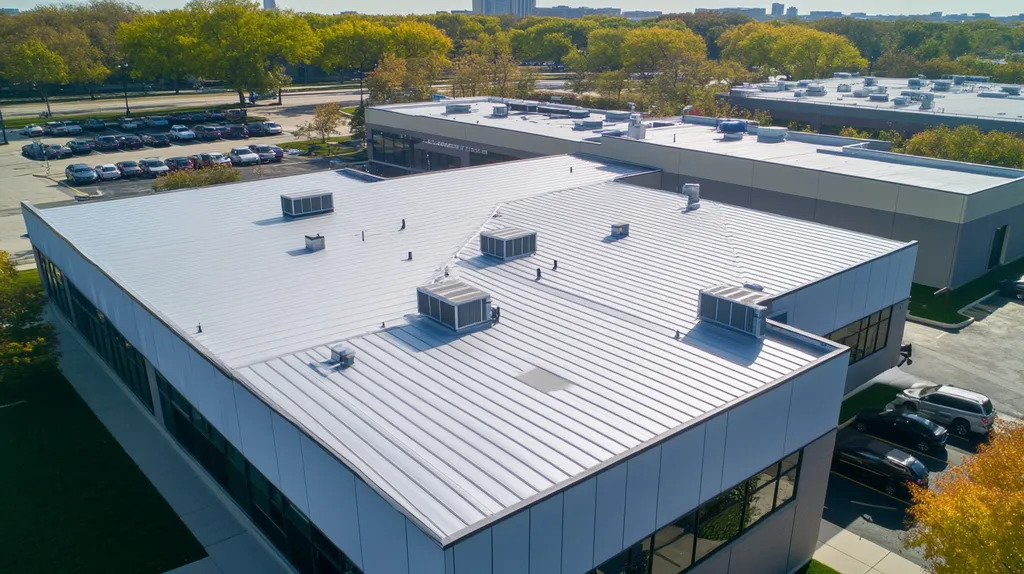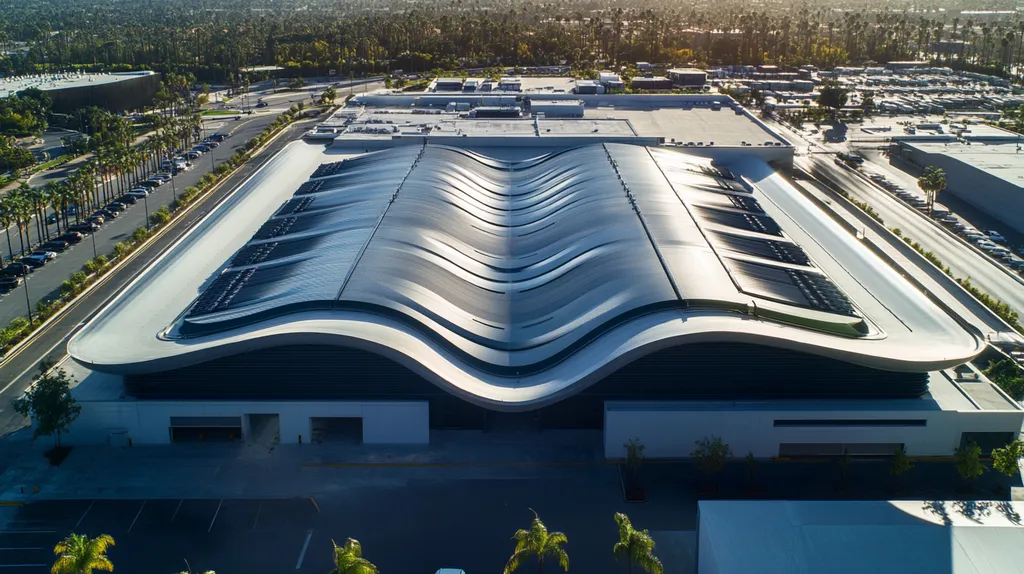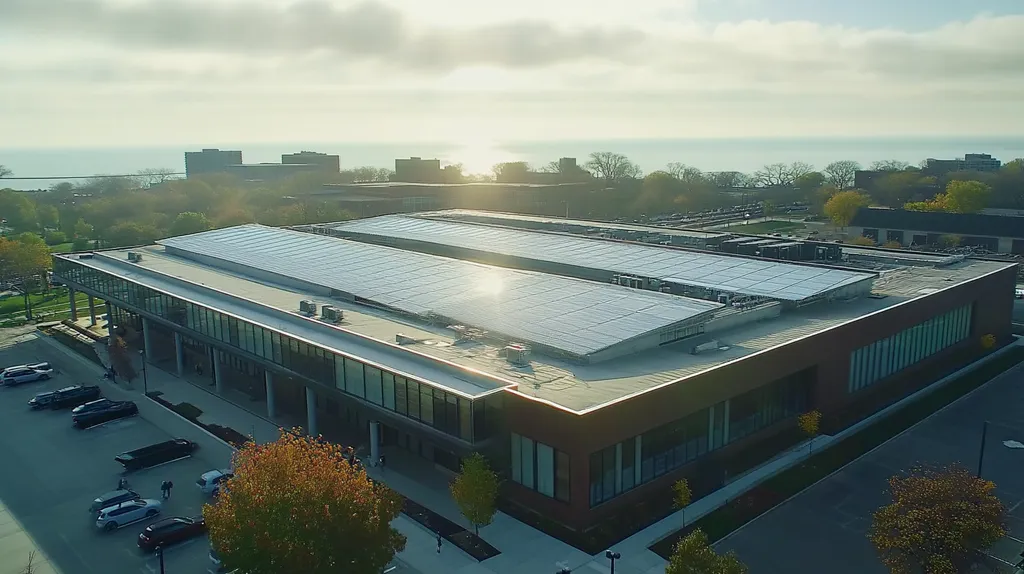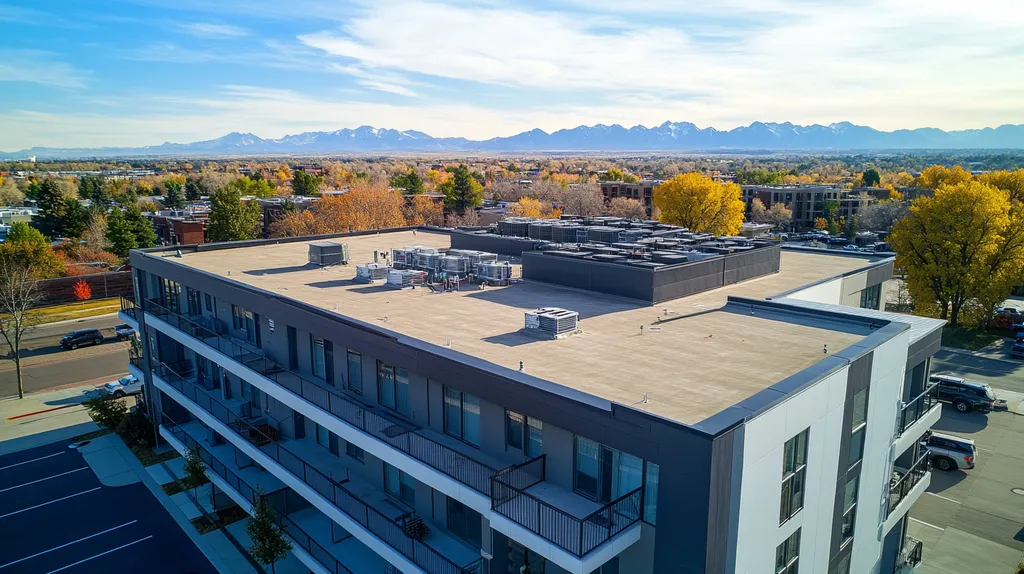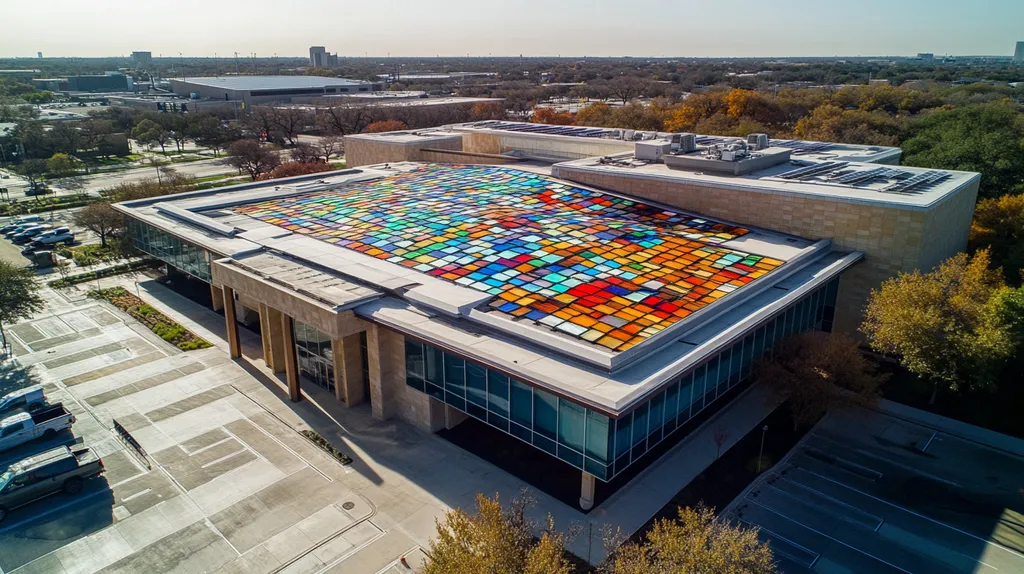Welcome to today’s Battle Royale featuring two roofing heavyweights: “TPO” in the east corner versus “PVC” in the west!
Tonight’s showdown pits these contenders against each other across six punishing rounds designed to test every aspect of their performance for Commercial Roof Investment.
At stake? Millions in potential costs, decades of building protection, and the critical performance demands of modern commercial and industrial facilities.
Our professional judging panel will evaluate each round on technical merit, real-world performance, and value delivery. After all six rounds, we’ll declare our ultimate champion.
Ladies and gentlemen, facility managers and building owners… it’s time to rumble!
ROUND 1: INITIAL COSTS & INSTALLATION
When evaluating commercial roofing investments, the initial phase of costs and installation carries substantial weight in the decision-making process. Calculating ROI for roofing investments requires careful consideration of installation complexity, energy efficiency potential, and long-term maintenance implications. Making the wrong choice at this stage can lead to cascading financial impacts throughout the roof’s lifecycle. (source: Polo14)
Material Expenses
Material costs represent the foundation of any roofing investment decision. Current market pricing shows TPO membrane costs ranging from $3.50 to $5.50 per square foot, including standard insulation and accessories.
PVC roofing materials typically command a premium, with costs ranging from $5.00 to $7.50 per square foot for comparable components. This higher price point reflects PVC’s advanced chemical formulation and manufacturing process.
The significant cost differential between these options can amount to tens of thousands of dollars on large commercial projects. For budget-conscious projects, TPO’s lower material costs present a clear ADVANTAGE.
Installation Complexity
TPO installations benefit from a streamlined process that requires fewer specialized tools and techniques. Most experienced roofing crews can efficiently handle TPO installations, resulting in lower labor costs and reduced chance of installation errors.
PVC installation demands more technical expertise and specialized welding equipment. The more complex installation process typically requires additional time and skilled labor, driving up installation costs.
While both materials can be installed effectively, TPO’s simpler installation requirements and broader contractor availability give it an ADVANTAGE in this category.
Project Timeline
A typical TPO installation progresses rapidly, with crews averaging 2,000-3,000 square feet per day under optimal conditions. The faster installation reduces business disruption and minimizes exposure to weather risks during installation.
PVC installations generally move at a slower pace, averaging 1,500-2,500 square feet daily due to more demanding seam welding requirements and quality control procedures. This extended timeline increases both labor costs and potential for weather-related delays.
The efficiency advantage of TPO installation translates to shorter project durations and faster return to normal operations, giving TPO another clear ADVANTAGE.
ROUND 1 WINNER: TPO
ROUND 2: DURABILITY & LIFESPAN
When investing millions in commercial roofing, durability and lifespan considerations can make or break your ROI calculations. Every year of extended service life directly impacts bottom-line profitability through reduced replacement costs and maintenance expenses. Calculating ROI for roofing investments requires careful evaluation of material resilience, weather performance, and ongoing maintenance requirements that will affect your facility’s long-term operational costs. (source: Polo14)
Material Resilience
TPO membranes demonstrate excellent resistance to UV radiation and general weathering, with most installations maintaining their integrity for 15-20 years. Their reflective surface helps minimize heat absorption and degradation from solar exposure.
PVC roofing systems deliver superior puncture resistance and exceptional chemical stability, particularly in industrial environments. These membranes commonly carry 25-30 year warranties, reflecting manufacturer confidence in their extended performance potential.
With consistently longer warranty periods and enhanced resistance to physical damage, PVC demonstrates a clear ADVANTAGE in material resilience.
Performance Under Extreme Conditions
TPO systems perform adequately in moderate climates but can show vulnerability during severe weather events. Extended exposure to high temperatures or repeated freeze-thaw cycles may accelerate wear on seams and membrane surfaces.
PVC roofing maintains exceptional dimensional stability and seam strength even under extreme temperature fluctuations. Its enhanced flexibility and superior weld strength provide better resistance to wind uplift and water penetration.
Given its superior performance in challenging environments, PVC holds the ADVANTAGE for extreme condition durability.
Maintenance Requirements
TPO roofs typically need regular inspections and periodic maintenance to preserve their protective capabilities. Special attention must focus on seam integrity and surface cleaning to prevent premature aging.
PVC systems generally require less frequent maintenance intervention due to their inherent resistance to biological growth and chemical exposure. Their superior seam strength also reduces the need for ongoing repairs.
The reduced maintenance burden and lower long-term upkeep costs give PVC another clear ADVANTAGE in this category.
ROUND 2 WINNER: PVC
ROUND 3: PERFORMANCE FACTORS
Commercial roofing performance directly impacts facility operating costs and asset value. Modern roofing systems must deliver exceptional durability while meeting increasingly stringent energy efficiency standards. Understanding how TPO and PVC membranes perform across key metrics helps property owners make investment decisions that will affect operational costs for decades.
Durability
Thermoplastic membranes offer superior impact resistance and flexibility compared to traditional roofing materials. Their advanced formulations provide excellent protection against physical damage and weathering. (source: APX Construction Group)
TPO membranes demonstrate good resistance to tears and punctures in normal conditions. However, their performance can degrade more quickly under intense UV exposure or extreme temperature fluctuations.
PVC roofing exhibits exceptional resistance to physical damage and chemical exposure. Its advanced polymer composition maintains structural integrity longer, typically lasting 25-30 years compared to TPO’s 15-20 year lifespan.
Given its superior longevity and chemical resistance, PVC holds the ADVANTAGE in durability.
Energy Efficiency
Energy performance has become a critical factor in commercial roofing selection. Both TPO and PVC systems can significantly reduce cooling costs through their reflective properties.
TPO membranes excel in solar reflectance, maintaining their bright white surface longer than most alternatives. This superior reflectivity translates into consistent energy savings throughout the membrane’s lifespan.
PVC roofing also offers excellent thermal performance but may require more frequent cleaning to maintain optimal reflectivity. While still highly efficient, PVC typically shows slightly lower reflectance values over time.
Based on sustained reflective performance, TPO claims the ADVANTAGE in energy efficiency.
Weather Resistance
Commercial roofs must withstand increasingly severe weather patterns while maintaining their protective capabilities. Performance under extreme conditions directly impacts maintenance costs and repair frequency.
TPO membranes provide adequate protection in moderate climates but can show vulnerability during severe weather events. Repeated exposure to temperature extremes may accelerate seam deterioration.
PVC roofing maintains exceptional dimensional stability and seam strength even under extreme conditions. Its superior flexibility and enhanced weld strength provide better resistance to wind uplift and water penetration.
With better performance in challenging weather conditions, PVC takes the ADVANTAGE.
ROUND 3 WINNER: PVC
ROUND 4: MAINTENANCE REQUIREMENTS
Maintenance requirements can make or break the long-term financial success of a commercial roofing investment. Every maintenance decision impacts not just immediate repair costs, but also the total lifecycle value of the roofing system. Property owners must carefully weigh how different roofing materials affect ongoing maintenance needs and associated labor costs.
Routine Maintenance Needs
TPO roofing systems require regular inspections focused on seam integrity and surface cleaning. These membranes resist dirt accumulation and biological growth, simplifying routine maintenance tasks.
PVC roofing demands more specialized maintenance attention due to its complex welded seams and chemical composition. These systems require experienced technicians for even basic maintenance procedures. (source: Heidler Roofing)
The simpler maintenance requirements and broader availability of qualified maintenance providers give TPO the ADVANTAGE in this category.
Repair Complexity
TPO repairs can typically be completed quickly using standard heat-welding equipment. Most commercial roofing contractors have the necessary tools and expertise to handle TPO repairs effectively.
PVC repairs demand precise temperature control and specialized welding techniques. The more complex repair requirements often result in longer facility disruption and higher labor costs.
With its more straightforward repair procedures and wider contractor availability, TPO claims the ADVANTAGE for repair complexity.
Long-term Maintenance Costs
TPO maintenance costs remain relatively stable throughout the membrane’s service life. The material’s resistance to environmental degradation helps minimize unexpected repair expenses.
PVC systems may require more frequent maintenance intervention as they age, particularly around seams and flashings. The specialized nature of PVC repairs can drive up long-term maintenance expenditures.
Given its more predictable maintenance costs and simpler repair requirements, TPO demonstrates the ADVANTAGE in this category.
ROUND 4 WINNER: TPO
ROUND 5: SUSTAINABILITY CREDENTIALS
Environmental considerations now directly impact commercial roofing ROI calculations through regulatory compliance, energy efficiency requirements, and corporate sustainability goals. Understanding ROI for roof replacement requires evaluating not just environmental impact, but also how sustainability features affect long-term operational costs and potential incentives. Property owners must carefully weigh these factors when selecting roofing systems that will influence their environmental footprint for decades. (source: Bella Roof Consulting)
Environmental Impact
TPO membranes are manufactured using environmentally responsible processes that minimize harmful emissions. Their production requires less energy than traditional roofing materials, and the finished product contains no chlorine or plasticizers.
PVC manufacturing generates concerning levels of dioxins and other harmful chemicals. While modern production methods have reduced these impacts, PVC’s environmental footprint remains higher than TPO throughout its lifecycle.
With lower production emissions and fewer harmful chemicals, TPO claims the ADVANTAGE in environmental impact.
Energy Performance
TPO’s highly reflective surface delivers exceptional solar reflectance values exceeding 0.70, reducing cooling demands significantly. These membranes maintain their reflective properties longer than most alternatives, providing sustained energy savings.
PVC roofing offers good initial reflectivity but may degrade more quickly under UV exposure. This degradation can reduce energy performance over time, requiring more frequent maintenance to maintain optimal efficiency.
Given its superior long-term reflective performance, TPO demonstrates the ADVANTAGE in energy efficiency.
Material Recyclability
TPO membranes can be fully recycled at the end of their service life, supporting circular economy initiatives. The recycling process requires minimal energy and produces no harmful byproducts.
PVC recycling presents significant challenges due to chemical additives and complex material composition. The process demands more energy and may generate hazardous waste streams.
Based on easier recyclability and cleaner processing, TPO secures the ADVANTAGE in this category.
ROUND 5 WINNER: TPO
ROUND 6: SPECIALIZED APPLICATIONS
Specialized roofing applications represent critical decision points where material selection directly impacts long-term performance and ROI. Understanding how different roofing materials perform in specific scenarios is crucial, as replacement costs for improperly specified materials can exceed initial savings by 300%. ROI calculations for specialized roofing investments must account for both immediate performance requirements and long-term durability factors. (source: Sunbase)
High Traffic Applications
Commercial roofs often serve as platforms for mechanical equipment maintenance, requiring materials that can withstand regular foot traffic and equipment movement. These high-stress areas demand exceptional puncture resistance and durability to maintain their protective integrity.
TPO membranes provide adequate resistance to normal foot traffic but can show premature wear in heavily trafficked areas. Their relatively soft composition makes them more susceptible to scratches and gouges from maintenance activities.
PVC roofing delivers superior puncture resistance and maintains its structural integrity even under heavy foot traffic. Its enhanced chemical formulation provides better protection against mechanical damage and wear patterns.
Given its superior durability under heavy use conditions, PVC claims the ADVANTAGE in high traffic applications.
Chemical Exposure Scenarios
Industrial facilities and specialized manufacturing environments often expose roofing materials to harsh chemicals, making chemical resistance a critical performance factor. The wrong material choice can lead to premature degradation and costly repairs.
TPO offers good resistance to common industrial chemicals but may show vulnerability to certain organic solvents and oils. Extended exposure to harsh chemicals can compromise membrane integrity and seam strength.
PVC roofing demonstrates exceptional resistance to a broad spectrum of industrial chemicals. Its advanced polymer composition maintains stability even under prolonged exposure to aggressive substances.
With superior chemical resistance and longer-term stability, PVC takes the ADVANTAGE in chemical exposure scenarios.
Extreme Temperature Environments
Roofing materials must maintain their protective properties across wide temperature ranges, particularly in facilities with high interior heat loads or exposure to extreme weather conditions.
TPO membranes perform well in moderate temperatures but can show stress at temperature extremes. Repeated thermal cycling may accelerate aging and affect seam integrity.
PVC roofing maintains exceptional dimensional stability and flexibility across extreme temperature ranges. Its superior formulation resists thermal fatigue and maintains seam strength even under severe temperature fluctuations.
Based on superior performance in extreme conditions, PVC earns the ADVANTAGE.
ROUND 6 WINNER: PVC
AND THE WINNER IS…
After six grueling rounds of technical analysis, we have a split decision! TPO claims victory in Rounds 1, 4, and 5, while PVC dominates Rounds 2, 3, and 6!
In this historic deadlock, both contenders prove worthy of the championship belt – but in different weight classes. TPO emerges as the cost-efficiency champion, delivering knockout performance in installation speed, maintenance simplicity, and environmental sustainability. Meanwhile, PVC proves unbeatable in the heavyweight durability division, demonstrating superior strength in chemical resistance, weather endurance, and specialized applications.
For budget-conscious projects in moderate climates, TPO stands ready to deliver reliable performance without breaking the bank. But when facing harsh industrial environments or extreme conditions, PVC’s superior durability and chemical resistance make it the undisputed champion.
Remember, folks – every building brings its own unique challenges to the ring. Local climate conditions, facility operations, and specific property requirements can all affect material performance. While this analysis highlights general strengths, property owners should always consult qualified roofing professionals who can evaluate their specific situation.
In the high-stakes world of commercial roofing, victory doesn’t go to the strongest contender – it goes to the right contender for YOUR building’s specific battle!
FREQUENTLY ASKED QUESTIONS
Q. What are the initial costs of a commercial roof installation?
A. Initial costs vary significantly between roofing materials. TPO typically costs less than PVC, making it a budget-friendly option for commercial roofs. It’s essential to consider installation complexity as well, as this can impact the overall investment.
Q. How long do commercial roofs last?
A. The lifespan of a commercial roof depends on the material. TPO roofs typically last around 15-20 years, whereas PVC roofs can last 25-30 years with proper maintenance. Durability factors also influence how long a roof effectively protects your building.
Q. What are key performance factors for industrial roofs?
A. Key performance factors include durability, energy efficiency, and weather resistance. TPO and PVC both offer strengths in these areas, but their effectiveness can vary based on conditions and application. Selecting the right material significantly impacts long-term performance and costs.
Q. How significant are maintenance requirements for a commercial roof?
A. Maintenance requirements play a crucial role in the lifespan of a commercial roof. TPO roofs generally require less frequent maintenance than PVC due to their simpler construction and durability. The frequency and complexity of repairs directly impact long-term costs.
Q. What environmental impacts should I consider for commercial roofs?
A. Environmental impacts include production emissions, energy efficiency, and recyclability. TPO roofs typically offer lower emissions and better energy savings, while PVC roofing can have a higher environmental footprint. Understanding these factors helps in long-term sustainability planning.
Q. How do specialized applications affect roofing choices?
A. Specialized applications, such as high traffic areas or chemical exposure, can dictate material choice. For example, PVC offers superior puncture resistance in high traffic zones, making it ideal for those conditions. It’s crucial to match the roofing system with its intended use for optimal performance.
Q. What factors influence the ROI of a commercial roof?
A. Key factors influencing ROI include initial installation costs, maintenance expenses, and the longevity of the roofing system. Energy efficiency also plays an important role, as it can lead to significant operational cost savings over time. Careful analysis of these elements will improve investment decisions.

